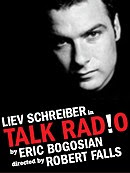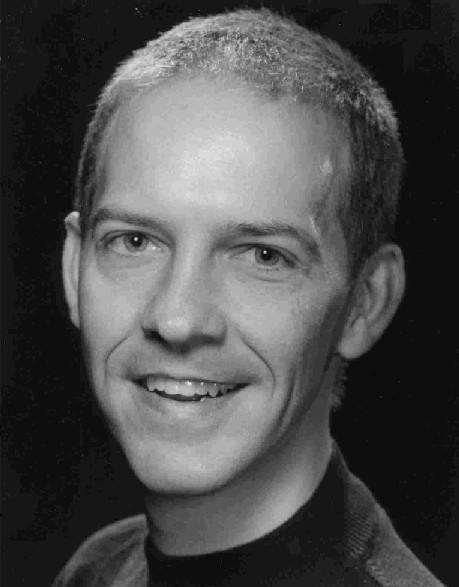 "Follies" Encores! production at City Center, February 10, 2007
"Follies" Encores! production at City Center, February 10, 2007An amazing cast, excellent direction with one of Sondheim's deepest scores, Encores! has delivered one of their best productions.
I think Encores! is one of the greatest ideas around. Gathering very talented performers and theatre artists to quickly mount a basic-staging of some of the theatre's better- or lesser-known shows that might not otherwise ever be seen. Encores! has had some significant successes in changing the fate of shows like "Chicago" (still running from its transfer to a commercial production) to "Wonderful Town" which enjoyed a good year or so in a commercial run, even to the soon-to-close "Apple Tree" at Roundabout's Studio 54.
There was a bit of buzz about transferring "Follies" to a commercial run, but the fervor for that seems to have waned and now appears unlikely (would have required some principal casting changes - Donna Murphy is already committed to another show this year).
Nevertheless, it was quite exciting to see this live production. The only other I'd seen was the 1985 documentary of the NY Philharmonic concert version with Lee Remick (Phyllis), Barbara Cook (Sally), George Hearn (Ben), Mandy Patinkin (Buddy), Carol Burnett (Carlotta), Elaine Stritch (Hattie), Phyllis Newman (Stella), just to name a few. At the time, I really thought I'd seen a definitive interpretation.
Not so.
Casey Nicholaw continues to prove himself as a thoughtful and talented director and choreographer. Of course, an all-star cast doesn't hurt a bit:
- Victoria Clark - Sally Durant Plummer
- Donna Murphy - Phyllis Rogers Stone
- Victor Garber - Benjamin Stone
- Michael McGrath - Buddy Plummer
- Philip Bosco - Dmitri Weismann
- Joan Worley - Stella Deems
- Christine Baranski - Carlotta Campion
- Lucine Amara - Heidi Schiller
- Mimi Hines - Hattie Walker
Too many highlights to list without reciting the show completely, here are a few:
Victoria Clark - I LOVE her! And have since "Light in the Piazza." Barbara Cook is famous for her Sondheim interpretations, but she needs to watch her back. Vickie's got a voice (literally and figuratively) that's up for the challenge. Mr. Sondheim might do well to keep her in mind as he writes his next new show.
Donna Murphy - another musical theatre artist of the highest caliber. Merely her subtle physicalization of this role communicated the years of experiences in Phyllis' life. Quoting Ben Brantley in his review: "To understand what “Follies” is meant to be — and too rarely is — you need only look at Ms. Murphy’s expression when she first sees the actress playing her 19-year-old self."
Victor Garber was both the show of bravado and cringing child that is Benjamin Stone. He was most affecting in his breakdown amidst "Live, Laugh, Love." Michael McGrath came quite a long way from Spamalot's Patsy, giving a particularly athletic song and dance performance in both "The Right Girl" and "The God-Why-Don't-You-Love-Me Blues."
If Ms. Baranski's Carlotta had been any more deadpan, one might have needed to check for a pulse. Nonetheless, it worked for the world-worn character, although she wasn't in great voice the night I saw the show. (I have to add here Jackie Hoffman's comment about her from her "Jackie With a Z" cabaret show at Joe's Pub. "Christine Baranski - she said to me, 'I know Hanukkah - that's Christmas with the candles, right?' ")
There were a couple of staging decisions that seemed to undercut the proceedings. One was the opening, which was much more effective in the 1985 staging. Having so many of the returning Follies girls enter to applause before the "Beautiful Girls" number seemed to undercut its impact. I also thought William Ivey Long and Gregg Barnes' total costume and hair changes for Sally and Phyllis for their respective songs, "Losing My Mind" and "The Story of Lucy and Jessie" interrupted the flow of the story. Changing from the all-black concert attire into an all white gown for Sally and all red "jazz-hot" costume for Phyllis was a bit jarring. Even the baby blue dinner jacket for "The God-Why-Don't-You-Love-Me Blues" was more than what would have been effective.
Things I really did like were the quartet number of young Sally, Phyllis, Ben and Buddy, "You're Gonna Love Tomorrow/Love Will See Us Through" with each couple interrupting and interpolating amongst themselves. It was a great concept that demonstrated how the couples matched and mismatched simultaneously. I also thought JoAnne Worley did a fantastic job leading "Who's That Woman?" and again kudos to Mr. Nicholaw for the mix of the older and younger versions of these characters dancing together.
Speaking again of Mr. Nicholaw (which one can't go without here) he also captured the various dance styles beautifully, (except perhaps for the tango number in Act I). From the tap of "Who's That Woman" to the Jack Cole style of "... Lucy and Jessie" to Busby Berkeley in "Live, Laugh, Love" he proves his worth in spades.
(Star Watch: David Hyde Pierce in the house. I even spoke to him - told him I was looking forward to "Curtains." He said I'd enjoy it "... a fun show")






